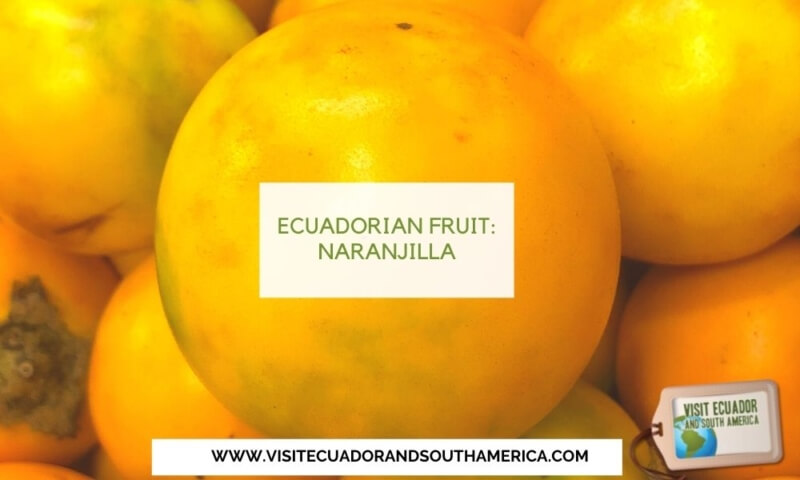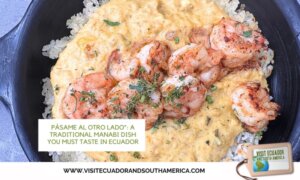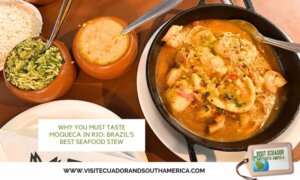Ecuadorian fruit: naranjilla
Ecuador is a country with tropical weather and dramatic changes in altitude in the middle of the world, making it ideal for fruit tasting.
When you visit some of our local markets, you will discover fruit that you’ve never seen or heard of before, and one example of this is naranjilla (Solanum quitoense).
Although it sounds like Naranja and looks like a small orange, these are two completely different fruits with different tastes.
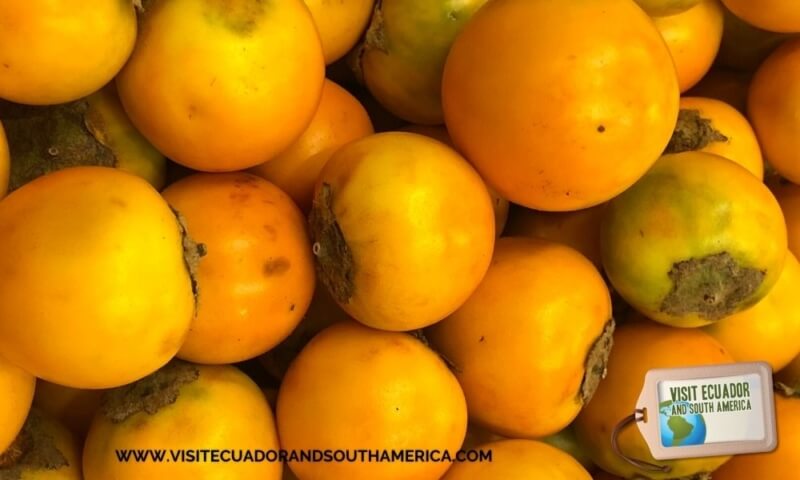
Today we have decided to write a post solely about naranjilla, one of the many exotic fruits in Ecuador.
Where do naranjillas grow?
A naranjilla grows in a herbaceous shrub that can be up to 8 ft (2.5 m) tall. (The image below was one of the first times we saw this shrub, and you can see that the fruit is still green)

We found out that wild-growing naranjilla plants are spiny instead of the cultivated varieties, which are spineless.
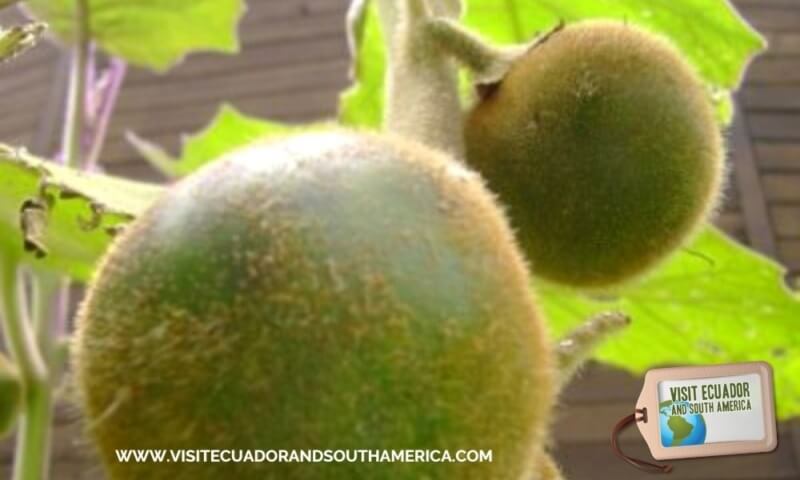
 If you are in South America, I would love to see your pictures.
If you are in South America, I would love to see your pictures.
What is naranjilla, and how is it eaten
Naranjilla is indigenous to the Andean countries of Colombia and Ecuador and looks like a small naranja (orange) with a darker, brighter orange color.
Once you open this round or round-ovate fruit, you find 4 compartments separated by membranous partitions and filled with light orange flesh with juicy green pulp and small seeds.
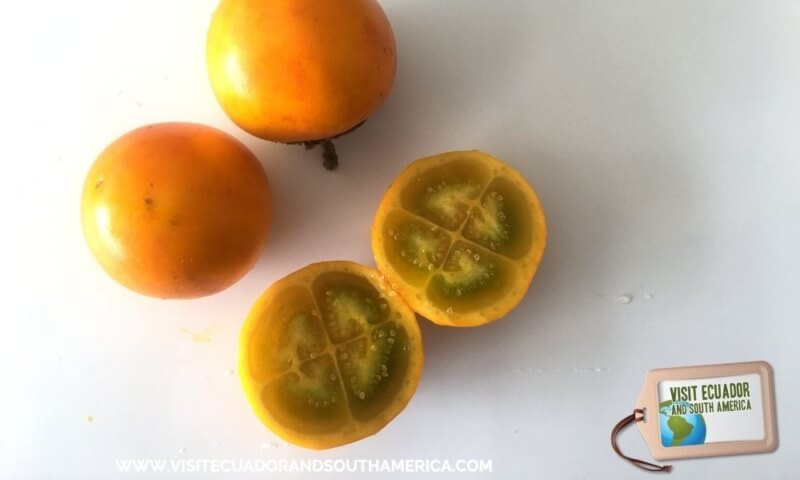
Naranjilla is never eaten fresh but blended with water and sugar to make juice, and it also is an ingredient for several dishes, including ice cream or meat stews.
This fruit is also used in colada de avena or cocktails like naranjillazo, canelazo or aguardiente sour.
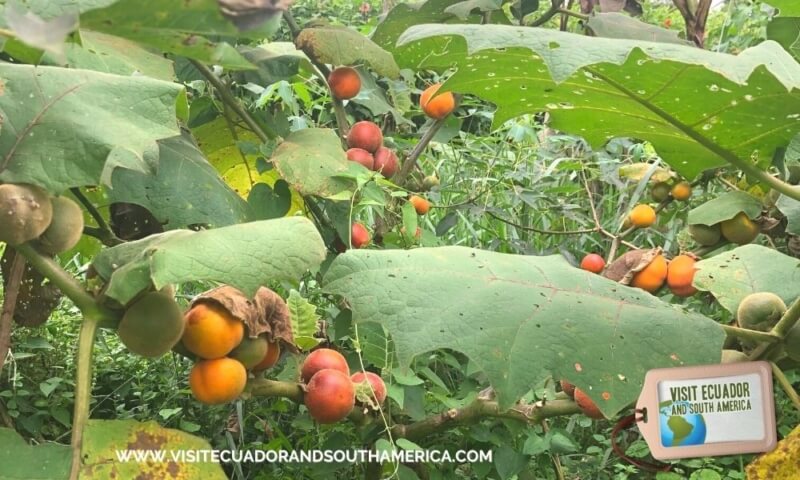
What it tastes like
This fruit has a citrus flavor, and it resembles a cross between a pineapple and a lemon
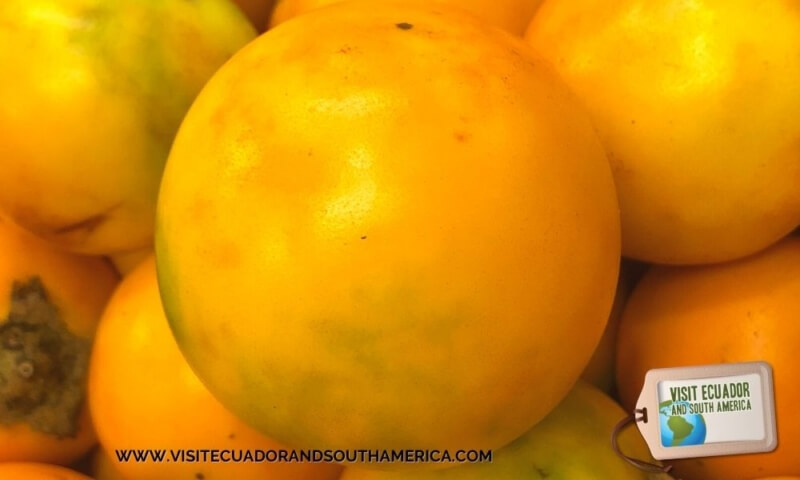 babaco
babaco
How and where to eat naranjilla
If you are in the highlands of Ecuador, you can find naranjilla for sale on local markets or small fruterias (fruit shops).
If you buy the fruit, you will empty the shells and discard them. Then you can use the flesh together with the seeds to make juice, ice cream, or add it to other dishes or beverages.
Otherwise, you can find some restaurants offering naranjilla juice, and if you are lucky, some ice cream stores offer naranjilla ice cream.
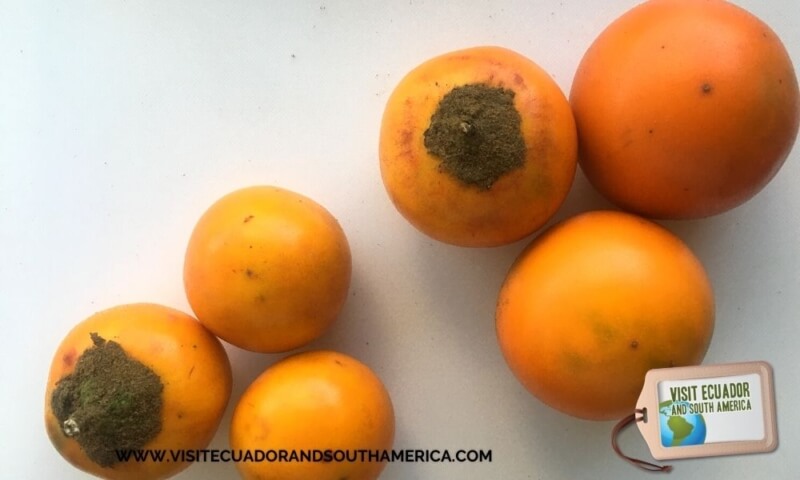
While doing research for this post, we found out that naranjilla has some major nutrients, including Vitamin K (14.58%), Vitamin B3 (10.88%), Vitamin B6 (9.85%), and Vitamin E (6.00%).
According to research, naranjilla has a wide range of health benefits, including cancer prevention, digestive health, cholesterol, heart health, vision health, immune system benefits, circulation, detoxification of your body, and bone strength.
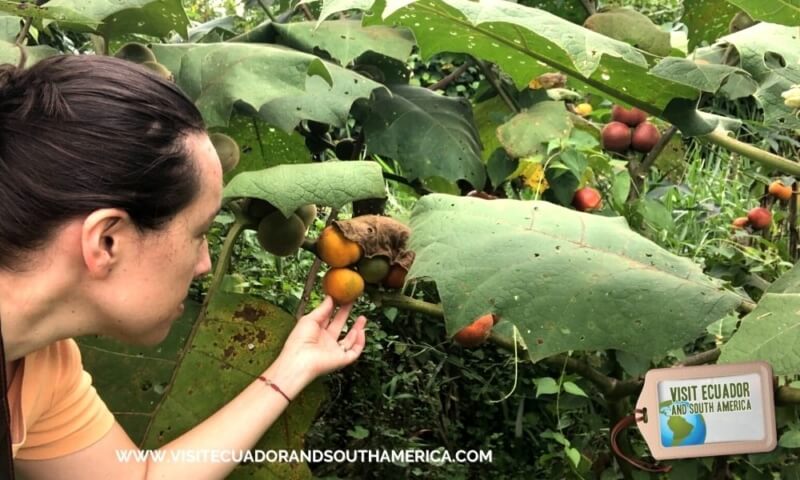
Have you tasted naranjilla before? Let us know here!
If you found this post inspiring and helpful, We would appreciate it if you would pin, share or tweet this page on any social media platforms you use!
Every little bit will help us fund our travels to continue bringing great content to our site.
PIN IT FOR LATER
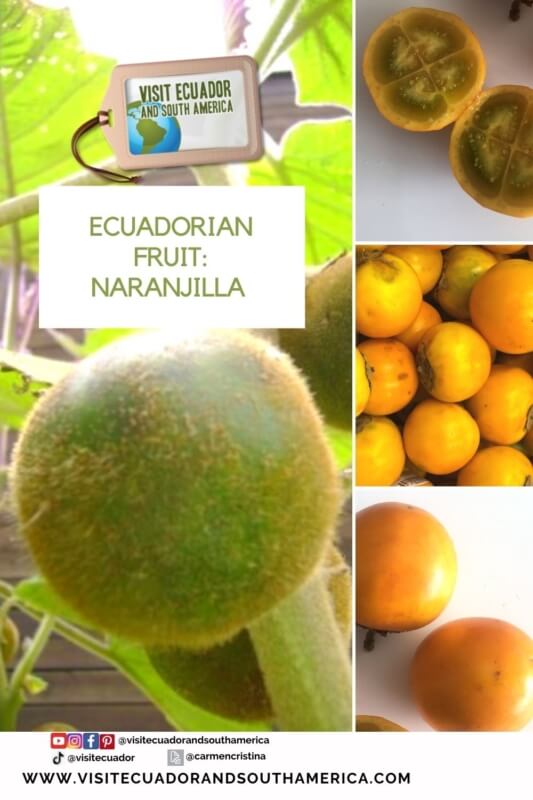

Want to Learn to make some Latin American dishes? This book: Gran Cocina Latina: The Food of Latin America, comprises 500 well-written recipes from all Spanish-speaking countries in Latin America, providing great information and recipes of the exciting food you can prepare at home. At the same time, you plan your visit to South America.
Don´t just dream it. Make it happen. Plan your South American trip with a local!
Take a look at this list of travel resources to plan your trip and travel in South America.
Daydreaming about your trip to South America? Order here your Free Ebook. I share with you some useful tips & resources for a memorable trip!
I invite you to follow me on Facebook, Twitter, Pinterest, and Instagram. In addition, you can subscribe on YouTube. You can also send me an email to get more information or help planning your trip: info(at) visitecuadorandsouthamerica(dot)com.

